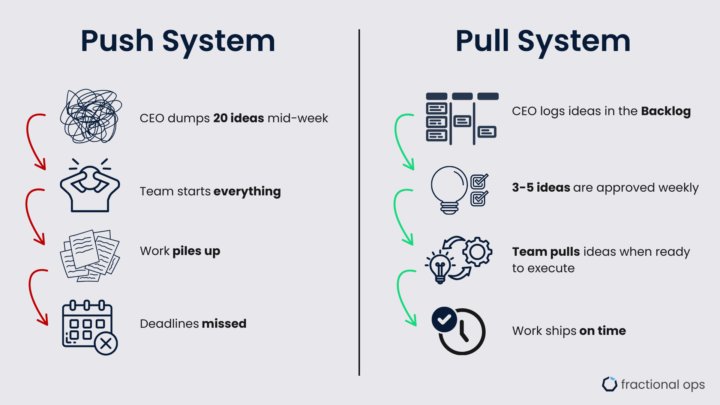
Write something
Pinned
Just dropped: the full breakdown of our AI-Powered Sales System.
This is the same go-to-market system I’ve built and implemented with 100+ B2B CEOs—many of whom had zero tech background and no CRM when they started. And now we’re making it public. In the 14-Day Sprint Hub, I walk through how to generate qualified pipeline from the 99% of buyers your competitors are ignoring—using intelligent agents, email infrastructure, and sales automations. No fluff, no hype. Just the full playbook. This is already helping companies: ✅ Land 107 demos in 45 days ✅ Save 5,000+ team hours ✅ Recover $466K in non-billable labor ✅ Find thousands of hidden buyers ✅ Personalize every message (even video) at scale ✅ Book qualified meetings in <24 hours We packaged everything into one tactical resource—including: - My tech stack & automations - Workflow maps & screenshots - High-converting email sequences - AI agent prompts - System architecture templates No gatekeeping. It’s all inside. If you’re a founder, ops lead, or RevOps builder—this is what we’ve been using behind the scenes to scale without sales burnout. 👉 See the full system here: https://fractionalops.com/gtm-sprint-hub/
0
0
Pinned
Are You Optimizing the Wrong 1%?
Most CEOs obsess over getting positive replies from outbound, but that’s just touchpoint 1 of 33. B2B sales don’t close at “Yes”—they close after consistent, structured follow-up. And most teams give up before touchpoint 10. Worse: - <3% of your market is even problem-aware - <1% are ready to buy - And if you’re under $10M ARR, most don’t even know you exist So why are you optimizing your GTM around the 1% instead of systemizing for the 99%? Here’s what top-performing CEOs are doing differently 👇 1. Think “Allbound,” not just outbound: Automate beyond the first reply. Connect cold outreach to CRM, website, social, and nurture workflows—so every click, view, and reply leads somewhere meaningful. 2. Build for the 99% Your pipeline isn't just for in-market leads. Create systems that warm up the rest: lead magnets, retargeting, educational content, and dynamic follow-up. 3. Automation ≠ Autopilot: Without structured handoffs and multi-touch nurture, your pipeline leaks. Automate follow-up based on engagement, and never let a warm lead go cold. 4. Engineer Trust at Scale: AI can assist, but humans build trust. Personalize with dynamic proof, vertical-specific content, and video intros (without sounding like a bot). Bottom line: If your GTM machine stops after a reply, you're leaving money on the table. The real leverage is in touchpoints 2 through 33. 👉 Want to see how we structure this at Fractional Ops? I put together a simple workflow diagram that maps out a common GTM system we build for CEOs of B2B companies.
0
0
Pinned
The System Behind $1M+ Worth of Content Execution
The Content Marketing Assets Tracker Course is now LIVE inside the classroom. If you're a founder or CEO juggling 100 marketing ideas a week—but your team can’t keep up—this course is built for you. We show you how to: ✅ Create a streamlined content system that works ✅ Capture and track ideas without chaos ✅ Align marketing execution with business priorities ✅ Use tools like ClickUp, Monday.com, or Hive to make it all run smoothly What’s inside: - 5 step-by-step videos to build your own real-time content tracker - A fully mapped marketing board that goes from idea → execution → published - Proven systems used with 8-figure teams to keep content flowing without burning out your team - Downloads: Meeting agendas, accountability templates, and bonus guides to implement it fast This is the exact system I use to turn leadership creativity into actual content that gets published—without 3AM emails or scattered Slack threads. 👉 Go check it out here
0
0
COO
How do we take the objectives and strategy from the CEO and build the overall operations and structure. cascading it down into projects, processes , systems , roles, data and communication structure?
93% of Work Gets Stuck Here—Fix It in 1 Move
Most CEOs accidentally kill execution by pushing too many priorities at once. I used to work with a CEO who dropped 20 new ideas every week... maybe 1 ever shipped. They blamed the team’s execution. But it was the CEO creating the drag. Too many priorities pushed through the business = downstream chaos. Work piles up, deadlines get missed, and nothing moves. The fix: Shift from a Push to a Pull System. Here’s how it works (see image attached below 👇): - Central Backlog: Every idea gets logged in one place. No exceptions. The CEO can dump 100+ ideas here if they want—that's the funnel. - Weekly Approval: Only 3–5 items get greenlit per week. The CEO sets what matters. Not when it starts. - Team Pulls Work: No work starts unless the team has bandwidth. No pushing “just one more” thing mid-week. Execution becomes a team responsibility—not a reaction to leadership chaos. - Fixed Pipeline: Each idea moves through a simple flow: Backlog → Approved → In Progress → Proofing → Live. Once something starts, it must finish. No hopping between half-baked tasks. Since installing this: ✅ Execution speed doubled ✅ Unfinished tasks dropped by 95% ✅ We published 3x more with less stress This works across: → Content – Log ideas anytime. Team pulls & ships without overload. → Product – Focus on 5 features 100% done, not 100 at 5%. → Client Work – Only accept what can be delivered on time. → Sales – Sequence campaigns + assets without killing momentum. Common Mistakes to Avoid: ❌ Overriding the pull system ❌ Vague, one-line backlog ideas ❌ No weekly rhythm or dashboard Your job as CEO: set the priority. Your team’s job: control the pace. When you stop pushing—and let the team pull— You protect your execution, your clarity, and your culture.
0
0

1-20 of 20

skool.com/fractionalops
Grow your B2B services business with multi-award-winning entrepreneur Corey Peck and the Ops Transformation System™.
Powered by

